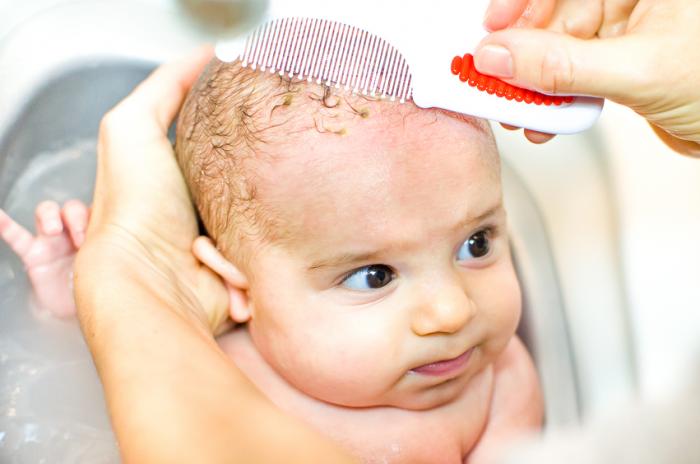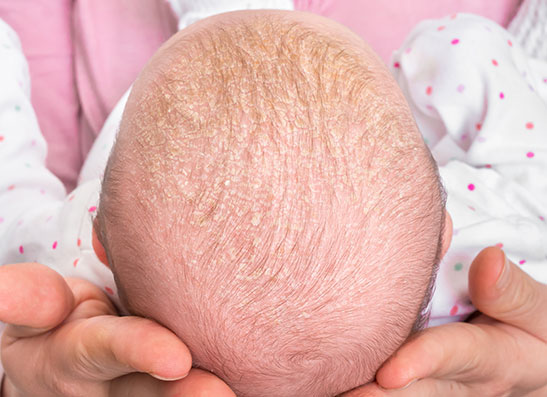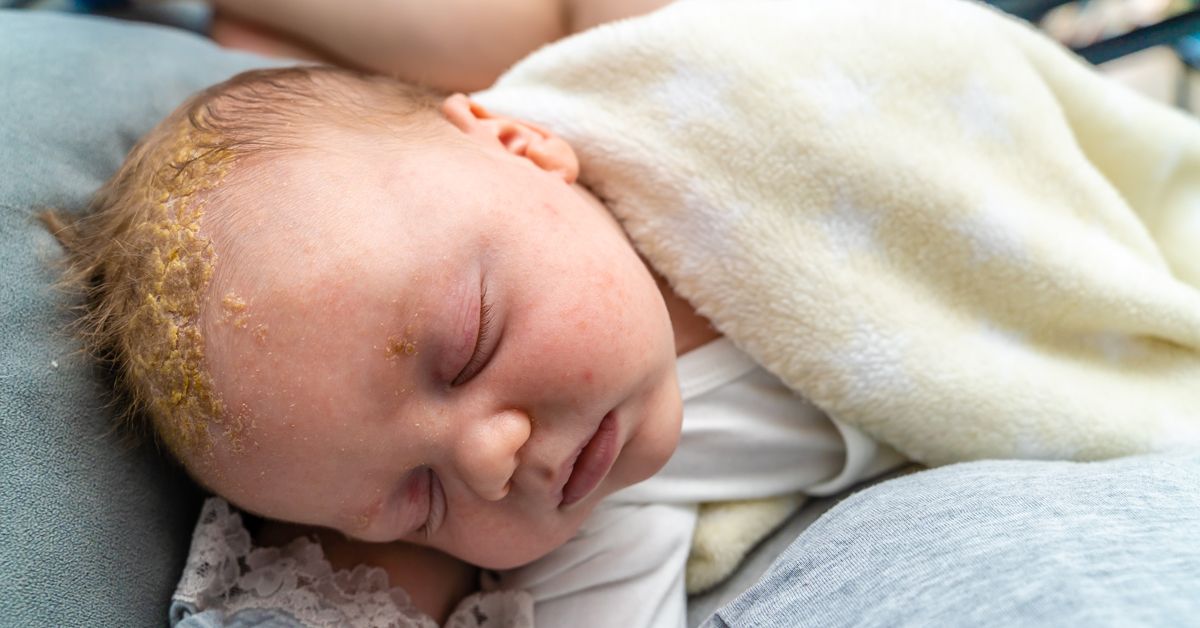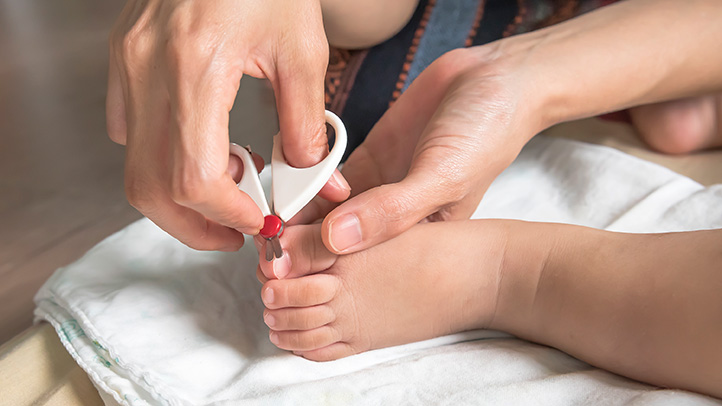Cradle cap is caused by excessive oil production in an infant’s scalp. This leads to flaky, crusty patches on the skin.
Cradle cap, also known as seborrheic dermatitis, is a common condition in infants. It typically appears as yellow or brown crusty patches on the scalp. Although it looks concerning, it is generally harmless and not itchy. The exact cause is unknown, but it’s believed to be related to hormonal changes that stimulate oil glands.
Proper scalp hygiene can help manage the condition. Parents often find it distressing, but most cases resolve on their own within a few weeks to months. Consulting a pediatrician can provide additional guidance and reassurance.
Introduction To Cradle Cap
Cradle cap is a common skin condition in infants. It’s characterized by scaly patches on the scalp. Many parents worry when they see it. Understanding cradle cap helps ease concerns. Let’s explore what causes it and why it’s important to know about it.
Common Symptoms
- Yellow or white scales on the scalp
- Oily or dry patches
- Redness in affected areas
- Possible hair loss in severe cases
Why It’s Important To Understand
Knowing the symptoms helps parents identify cradle cap early. Early identification can lead to quicker treatment. Understanding the condition reduces unnecessary worry. You can better care for your baby’s scalp. It also helps in preventing the spread to other areas.
Hormonal Factors
Understanding the causes of cradle cap is essential for parents. One significant factor is hormonal influences. These hormones can affect your baby’s skin condition. Below, we explore the key hormonal factors.
Maternal Hormones
Maternal hormones transfer to the baby during pregnancy. These hormones can stimulate the baby’s oil glands. Excessive oil production can lead to cradle cap. The oil makes the skin cells stick together. This causes the flaky, yellowish patches seen in cradle cap.
Hormonal Imbalance
A baby’s body may have a hormonal imbalance. This can also contribute to cradle cap. The imbalance can cause the sebaceous glands to overproduce oil. Too much oil can trap skin cells. This results in the characteristic scales of cradle cap.
Sebum Production
Cradle cap is a common condition in infants. One of the main causes is the production of sebum. Sebum is an oily substance that comes from the sebaceous glands. It helps keep the skin moist. But sometimes, too much sebum can lead to cradle cap.
Role Of Sebaceous Glands
The sebaceous glands are tiny structures in the skin. They are found near hair follicles. These glands produce sebum. Sebum helps protect the skin. It keeps the skin soft and prevents dryness.
Newborns have active sebaceous glands. This is due to hormones from the mother. These hormones can cause the glands to produce more sebum. This extra sebum can mix with dead skin cells. This mixture can form scales on the scalp. These scales are what we call cradle cap.
Excess Oil And Scalp
Excess sebum can lead to oily skin. This can happen on the scalp too. When there is too much oil, it can trap dead skin cells. These trapped cells stick to the scalp. They form yellow or white scales.
These scales can be greasy. They may also be thick. This is how cradle cap looks. The extra oil makes it hard for the scales to fall off. This condition is not harmful. But it can look unpleasant.
Keeping the scalp clean can help. Gentle washing can remove extra oil. This may reduce the scales over time.

Credit: www.medicalnewstoday.com
Fungal Infections
Cradle cap, or seborrheic dermatitis, is a common condition in babies. One major cause is fungal infections. This type of infection affects the scalp and can lead to flaky, yellow patches. Understanding the role of fungi can help in managing cradle cap effectively.
Malassezia Fungus
The Malassezia fungus is a yeast that naturally lives on the skin. In some cases, it grows excessively, causing irritation. This irritation leads to the symptoms seen in cradle cap. The fungus thrives in oily areas, making the scalp a perfect environment.
Impact On Scalp Health
Excessive growth of Malassezia affects the health of the scalp. It causes skin cells to stick together and form scales. These scales then pile up, creating the thick, crusty patches characteristic of cradle cap.
| Impact | Description |
|---|---|
| Irritation | Fungus leads to skin irritation and redness. |
| Scaling | Dead skin cells clump and form scales. |
| Crust Formation | Scales build up, creating crusty patches. |
Parents often worry about cradle cap. Knowing the role of fungal infections can ease concerns. Simple treatments can help manage the condition.
Genetic Predisposition
Cradle cap, or infantile seborrheic dermatitis, can be influenced by genetics. Understanding this helps in managing and possibly preventing it. Some babies are more likely to get cradle cap due to inherited traits.
Family History
Family history plays a major role in the occurrence of cradle cap. If parents had cradle cap, their baby might have it too. This means the condition can run in families. Parents should be aware of this connection.
Genetic Markers
Certain genetic markers may increase the risk of cradle cap. These markers can be specific genes inherited from parents. Researchers study these markers to understand more about cradle cap. Knowing these markers helps in early detection and treatment.
| Factor | Description |
|---|---|
| Inherited Traits | Passed down from parents, increasing cradle cap risk. |
| Specific Genes | Genes linked to skin conditions contribute to cradle cap. |
| Family History | Higher chance if family members had cradle cap. |
Environmental Factors
Cradle cap is a common condition in infants. Environmental factors can contribute to its development. Understanding these factors can help manage and prevent cradle cap.
Climate And Weather
Different climates can affect a baby’s skin. Hot and humid weather can cause excessive sweating. This can lead to clogged pores, resulting in cradle cap. On the other hand, cold and dry weather can dry out a baby’s skin. This can make the scalp flaky, which can also contribute to cradle cap.
It’s important to keep the baby comfortable. Dressing them appropriately for the weather can help. Using a humidifier in dry climates can also be beneficial. Keeping the baby’s scalp clean and moisturized is key.
Exposure To Irritants
Babies have sensitive skin. Exposure to irritants like harsh shampoos and soaps can aggravate their skin. This can lead to cradle cap. Chemicals in the air, such as smoke or pollution, can also be irritants. These factors can worsen the condition.
To minimize exposure, use mild, baby-friendly products. Avoid smoking around the baby and ensure good air quality. Keeping the environment clean and free from dust is also important. This can help in managing cradle cap effectively.
Diet And Nutrition
Understanding the causes of cradle cap can help parents manage this common infant condition. One vital aspect to consider is diet and nutrition. Proper nutrition plays a significant role in an infant’s overall health, including their skin condition.
Nutritional Deficiencies
Nutritional deficiencies can affect an infant’s skin health. A lack of essential vitamins and minerals might contribute to cradle cap. Let’s look at some key nutrients:
- Vitamin B7 (Biotin): Important for healthy skin. Deficiency might lead to dry, flaky skin.
- Essential Fatty Acids: Omega-3 and Omega-6 fatty acids are vital. They help maintain skin moisture and barrier function.
- Zinc: Supports skin health and immune function. Low levels might cause skin issues.
Ensuring that infants receive these nutrients can help prevent or reduce cradle cap symptoms.
Impact Of Breastfeeding
Breastfeeding can influence an infant’s skin condition. Breast milk contains essential nutrients and antibodies.
Here are some ways breastfeeding might impact cradle cap:
- Nutrient Supply: Breast milk provides a well-balanced diet. It includes vitamins and minerals crucial for skin health.
- Immune Support: Antibodies in breast milk help fight infections. They can improve overall skin conditions.
- Hydration: Proper hydration helps maintain skin moisture. Breast milk is excellent for keeping babies hydrated.
While breastfeeding offers many benefits, not all cases of cradle cap can be prevented. Each baby is unique, and other factors might contribute.

Credit: raisingchildren.net.au
Preventive Measures
Preventing cradle cap can be easier with the right measures. Taking care of your baby’s scalp is crucial. Understanding how to keep it clean and healthy is key.
Proper Scalp Hygiene
Maintaining proper scalp hygiene is very important. Here are some tips:
- Wash your baby’s scalp regularly.
- Use a gentle baby shampoo.
- Rinse thoroughly to remove all shampoo.
- Brush the scalp with a soft brush.
Regular washing helps remove excess oil and flakes. Always be gentle to avoid irritation.
Safe Skincare Products
Choosing safe skincare products is essential. Make sure the products are designed for babies.
| Product Type | Recommended Ingredients | Avoid |
|---|---|---|
| Shampoo | Aloe Vera, Chamomile | Sulfates, Parabens |
| Moisturizer | Coconut Oil, Shea Butter | Fragrances, Alcohol |
Always read the labels before buying. Safe skincare products are gentle and free from harsh chemicals.
Effective Treatments
Cradle cap is a common condition in infants. It appears as yellowish, greasy patches on the scalp. Treating cradle cap is important to keep your baby comfortable. Here are some effective treatments you can try.
Medical Interventions
For severe cases, doctors may recommend medical treatments. These can include:
- Topical Steroids: These help reduce inflammation and itching.
- Antifungal Creams: These treat any fungal infections.
- Medicated Shampoos: These can help remove scales.
Always consult your pediatrician before using these treatments.
Home Remedies
Many parents prefer home remedies. These are gentle and natural. Here are some popular options:
- Baby Oil: Apply baby oil to the scalp. Let it sit for 15 minutes. Then, gently brush the flakes away.
- Olive Oil: Similar to baby oil, olive oil can soften the scales. Apply it and leave for a while. Use a soft brush to remove the flakes.
- Gentle Baby Shampoo: Wash the baby’s hair with a gentle baby shampoo. Do this daily to keep the scalp clean.
These methods are safe and effective for most babies.

Credit: www.healthline.com
Frequently Asked Questions
What Triggers Cradle Cap?
Cradle cap is triggered by excess oil production in a baby’s scalp. Hormones from the mother can also contribute.
How Do You Stop Cradle Cap From Coming?
To prevent cradle cap, gently wash your baby’s scalp daily with a mild shampoo. Use a soft brush to remove flakes. Ensure the scalp stays moisturized.
Should You Remove The Cradle Cap?
Gently brushing the baby’s scalp can help remove cradle cap. Avoid picking or scraping the area. Use mild shampoo.
Does Breast Milk Help Cradle Cap?
Yes, breast milk can help treat cradle cap. Apply a small amount to the affected area, then gently wash.
Conclusion
Understanding the causes of cradle cap helps parents manage this common condition effectively. It’s usually harmless and treatable. Regular gentle washing and moisturizing can keep it under control. Consult a pediatrician if symptoms persist. Knowing these tips can provide peace of mind and ensure your baby’s scalp stays healthy.

